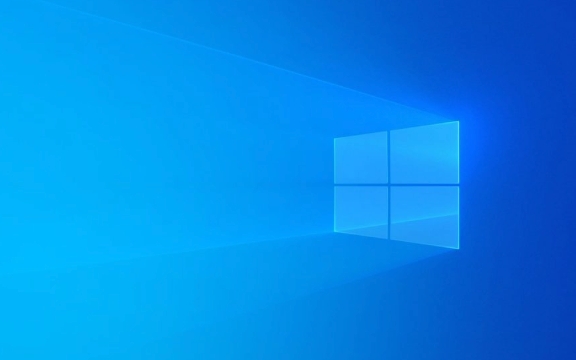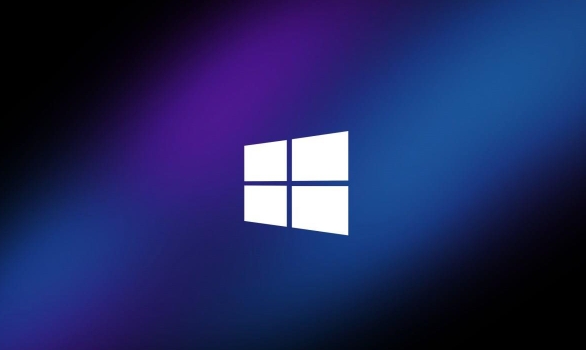When the computer pops up the "USB device not recognized" prompt, it is usually because of hardware, driver or system setup issues that the system cannot recognize the USB device. 1. First check the USB device and interface itself, try to replace the computer or USB cable to eliminate device damage or interface problems; 2. Restart the computer and re-plug and unplug the device, try different USB interfaces, especially the host native interface; 3. Update or reinstall the USB driver, uninstall the relevant USB devices through the Device Manager and restart the computer to automatically reinstall the driver; 4. Check the power management settings and uncheck "Allow the computer to turn off this device to save power" to ensure stable power supply. In most cases, follow the above steps to resolve the problem without immediately suspicion of system or hardware failures.

The prompt "USB device not recognized" pops up on the computer, which is one of the common problems in Windows systems. This prompt usually means that the system cannot properly identify the plugged USB device. There may be something wrong with the hardware, driver or system setup. Don't worry, this situation can be solved most of the time.

1. Check the USB device and interface itself
This is the easiest to ignore but also the most basic link. Confirm first:

- Is the device normal? Try plugging it into another computer to see if there is any response.
- Is there any problem with the USB cable or interface: Some data cables only support charging but not transmit data.
- The USB port of the host is plugged in, rather than the front panel or other expansion interface (sometimes the front interface is insufficiently powered).
If other computers can recognize it, the problem is most likely in the current computer; if it does not recognize it, it may be that the device is broken or there is a problem with the cable.
2. Restart the computer and re-plug and unplug the device
This problem is sometimes just a temporary system glitch. After shutting down and then turning on the USB device, it will be able to return to normal in many cases. You can also try changing the USB socket, especially from USB 3.0 to USB 2.0.

Also note:
- Do not plug it in the hub, just plug it into the USB port of the host.
- Make sure the device is completely inserted and not loose.
3. Update or reinstall the USB driver
You can check whether a yellow exclamation mark appears in the device manager. If so, it means that there may be a problem with the driver.
The operation steps are as follows:
- Press
Win Xand select Device Manager - Find "Universal Serial Bus Controller"
- Right-click on the USB-related device (such as USB Root Hub) and select "Update Driver" or "Uninstall Device"
- After uninstalling, restart the computer, the system will automatically reinstall the driver
If you are not sure which driver has problems, you can uninstall all the USB words inside and then restart.
4. Check the power management settings
Sometimes, in order to save power, the system will limit the power supply of the USB interface. You can check this way:
- Also open "Device Manager"
- Find a USB device in the "Universal Serial Bus Controller"
- Right-click → Properties → Power Management
- Remove the "Allow the computer to turn off this device to save power"
This setting will affect the stability of the equipment's power supply, especially for some peripherals that require continuous power supply.
Basically these common methods
When encountering "USB device not recognized Windows", do not think about system reinstallation or motherboard problems as soon as you come up, and first check the device, interface, driver and power settings in order. In most cases, it is not a big problem, but it is easy to misjudgment because of skipping the steps.
The above is the detailed content of USB device not recognized Windows. For more information, please follow other related articles on the PHP Chinese website!

Hot AI Tools

Undress AI Tool
Undress images for free

Undresser.AI Undress
AI-powered app for creating realistic nude photos

AI Clothes Remover
Online AI tool for removing clothes from photos.

Clothoff.io
AI clothes remover

Video Face Swap
Swap faces in any video effortlessly with our completely free AI face swap tool!

Hot Article

Hot Tools

Notepad++7.3.1
Easy-to-use and free code editor

SublimeText3 Chinese version
Chinese version, very easy to use

Zend Studio 13.0.1
Powerful PHP integrated development environment

Dreamweaver CS6
Visual web development tools

SublimeText3 Mac version
God-level code editing software (SublimeText3)
 How to reset the TCP/IP stack in Windows
Aug 02, 2025 pm 01:25 PM
How to reset the TCP/IP stack in Windows
Aug 02, 2025 pm 01:25 PM
ToresolvenetworkconnectivityissuesinWindows,resettheTCP/IPstackbyfirstopeningCommandPromptasAdministrator,thenrunningthecommandnetshintipreset,andfinallyrestartingyourcomputertoapplychanges;ifissuespersist,optionallyrunnetshwinsockresetandrebootagain
 What are the main pros and cons of Linux vs. Windows?
Aug 03, 2025 am 02:56 AM
What are the main pros and cons of Linux vs. Windows?
Aug 03, 2025 am 02:56 AM
Linux is suitable for old hardware, has high security and is customizable, but has weak software compatibility; Windows software is rich and easy to use, but has high resource utilization. 1. In terms of performance, Linux is lightweight and efficient, suitable for old devices; Windows has high hardware requirements. 2. In terms of software, Windows has wider compatibility, especially professional tools and games; Linux needs to use tools to run some software. 3. In terms of security, Linux permission management is stricter and updates are convenient; although Windows is protected, it is still vulnerable to attacks. 4. In terms of difficulty of use, the Linux learning curve is steep; Windows operation is intuitive. Choose according to requirements: choose Linux with performance and security, and choose Windows with compatibility and ease of use.
 How to enable Hyper-V in Windows
Aug 04, 2025 am 12:53 AM
How to enable Hyper-V in Windows
Aug 04, 2025 am 12:53 AM
Hyper-VcanbeenabledonWindowsPro,Enterprise,orEducationeditionsbymeetingsystemrequirementsincluding64-bitCPUwithSLAT,VMMonitorModeExtension,BIOS/UEFIvirtualizationenabled,andatleast4GBRAM.2.EnableHyper-VviaWindowsFeaturesbyopeningoptionalfeatures,chec
 How to change screen resolution in Windows
Aug 02, 2025 pm 03:08 PM
How to change screen resolution in Windows
Aug 02, 2025 pm 03:08 PM
Right-clickthedesktopandselect"Displaysettings"toopenthedisplayoptions.2.Underthe"Display"section,clickthe"Displayresolution"dropdownandchoosearesolution,preferablytherecommendedoneforbestimagequality.3.Confirmthechanges
 How to solve touchpad not working issues on Windows?
Aug 05, 2025 am 09:21 AM
How to solve touchpad not working issues on Windows?
Aug 05, 2025 am 09:21 AM
Checkifthetouchpadisdisabledbyusingthefunctionkey(Fn F6/F9/F12),adedicatedtogglebutton,orensuringit’sturnedoninSettings>Devices>Touchpad,andunplugexternalmice.2.UpdateorreinstallthetouchpaddriverviaDeviceManagerbyselectingUpdatedriverorUninstal
 How to troubleshoot a failed Windows installation
Aug 02, 2025 pm 12:53 PM
How to troubleshoot a failed Windows installation
Aug 02, 2025 pm 12:53 PM
VerifytheWindowsISOisfromMicrosoftandrecreatethebootableUSBusingtheMediaCreationToolorRufuswithcorrectsettings;2.Ensurehardwaremeetsrequirements,testRAMandstoragehealth,anddisconnectunnecessaryperipherals;3.ConfirmBIOS/UEFIsettingsmatchtheinstallatio
 How to change the processor affinity for an application permanently in Windows
Aug 03, 2025 am 12:37 AM
How to change the processor affinity for an application permanently in Windows
Aug 03, 2025 am 12:37 AM
Windowsdoesnotnativelysupportpermanentlysavingprocessoraffinityforapplications,butyoucanachievepersistentaffinityusingscriptsorthird-partytools.1.ProcessoraffinitybindsaprocesstospecificCPUcores,improvingperformanceorthermalmanagement,thoughWindowsre
 How to roll back a driver update in Windows
Aug 03, 2025 am 11:10 AM
How to roll back a driver update in Windows
Aug 03, 2025 am 11:10 AM
OpenDeviceManagerbypressingWin XandselectingitorsearchingintheStartmenu.2.Locatetheproblematicdevice—suchasDisplayadapters,Soundvideoandgamecontrollers,Networkadapters,orinputdevices—right-clickitandselectProperties.3.GototheDrivertabandclick“RollBac






